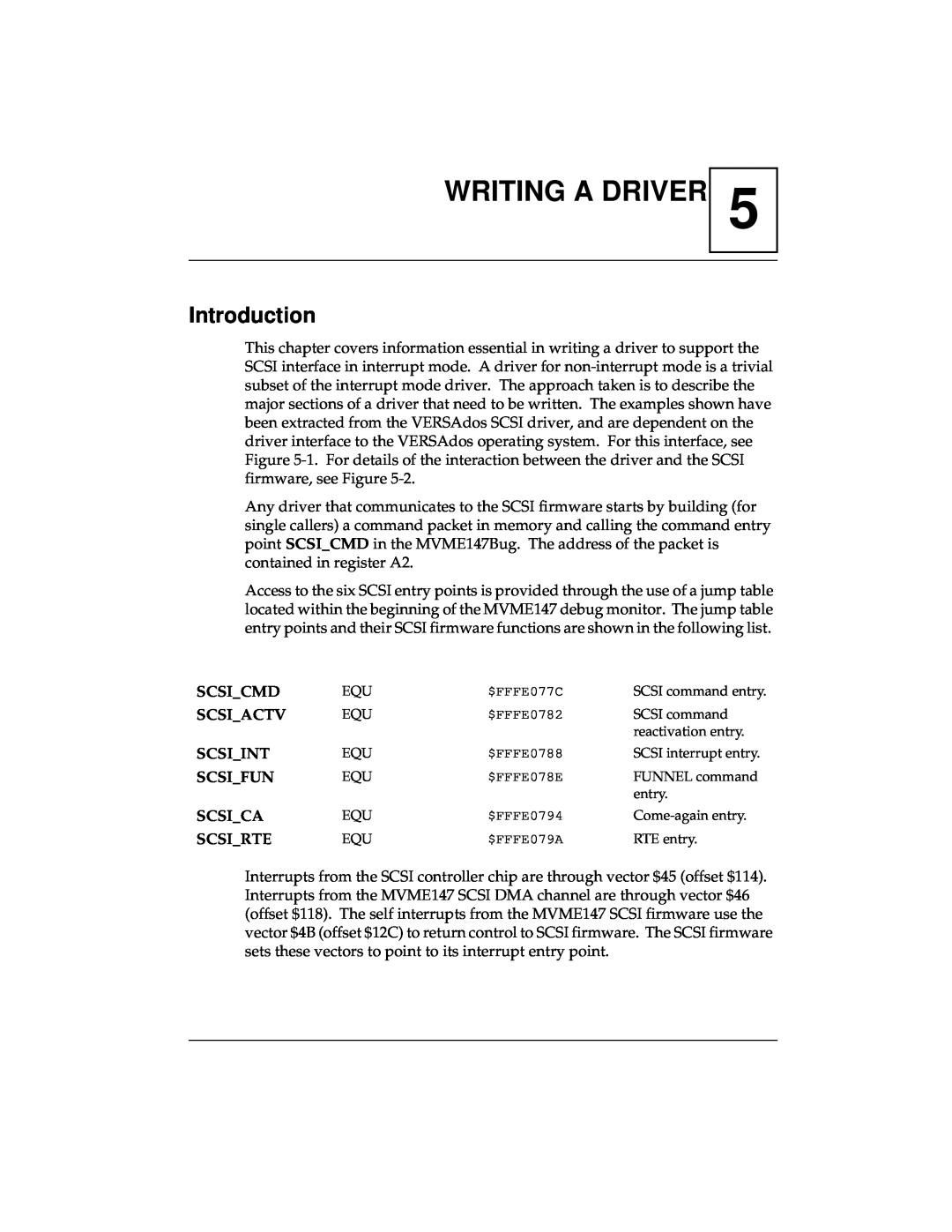
WRITING A DRIVER
5
Introduction
This chapter covers information essential in writing a driver to support the SCSI interface in interrupt mode. A driver for
Any driver that communicates to the SCSI firmware starts by building (for single callers) a command packet in memory and calling the command entry point SCSI_CMD in the MVME147Bug. The address of the packet is contained in register A2.
Access to the six SCSI entry points is provided through the use of a jump table located within the beginning of the MVME147 debug monitor. The jump table entry points and their SCSI firmware functions are shown in the following list.
SCSI_CMD | EQU | $FFFE077C | SCSI command entry. |
SCSI_ACTV | EQU | $FFFE0782 | SCSI command |
|
|
| reactivation entry. |
SCSI_INT | EQU | $FFFE0788 | SCSI interrupt entry. |
SCSI_FUN | EQU | $FFFE078E | FUNNEL command |
|
|
| entry. |
SCSI_CA | EQU | $FFFE0794 | |
SCSI_RTE | EQU | $FFFE079A | RTE entry. |
Interrupts from the SCSI controller chip are through vector $45 (offset $114). Interrupts from the MVME147 SCSI DMA channel are through vector $46 (offset $118). The self interrupts from the MVME147 SCSI firmware use the vector $4B (offset $12C) to return control to SCSI firmware. The SCSI firmware sets these vectors to point to its interrupt entry point.
